Upper limb different people throughout the world are having their lives changed thanks to 3D printed arms. Makers and engineers are focusing their skills on creating awesome prostheses to help with everyday and extraordinary tasks. We delve into the 5 most promising projects from 2019.
Unlimited Tomorrow – Advanced Arms
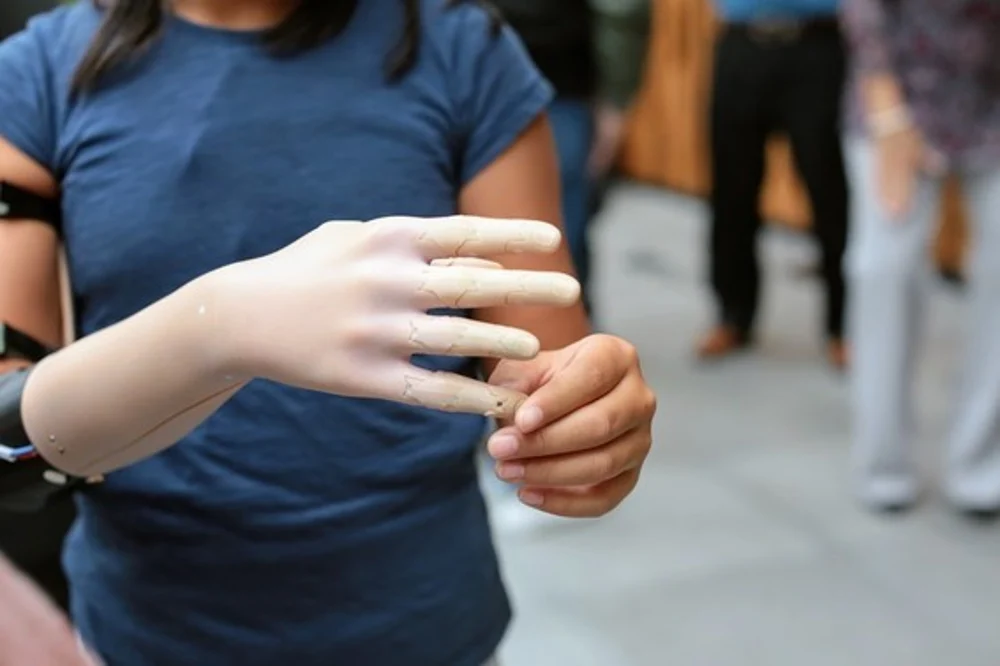
Easton LaChepelle was a teenage bedroom roboticist, tinkering with a robotic hand made from Lego, model airplane motors, fishing wire, and electrical tubing. He entered a version into the Colorado State Science Fair, where a young girl approached him, fascinated by his project. Upon discovering that she was upper limb different and that her existing prostheses cost $80,000, he realized that he could help.
He and a group of friends formed Unlimited Tomorrow with the aim of creating affordable, advanced 3D printed arms. Today, the company has come an incredibly long way, with partnerships throughout the tech industry.
One such partnership was with Microsoft. Together, the two companies brought a 3D printed arm to a little girl called Momo. It was developed from 3D scans to fully personalize the fit, and Stratasys 3D printers were used to print full-color skin tones. The prosthetic arm weighs one pound, features haptic force feedback and even includes machine learning to track and adapt usage.
In 2018, Unlimited Tomorrow pledged to give the first 100 of these incredibly advanced 3D printed arms away for free. As of the 6th of January, their Indiegogo campaign was fully funded, and they’re now on their way to changing 100 lives.
Open Bionics – Superhero Tech
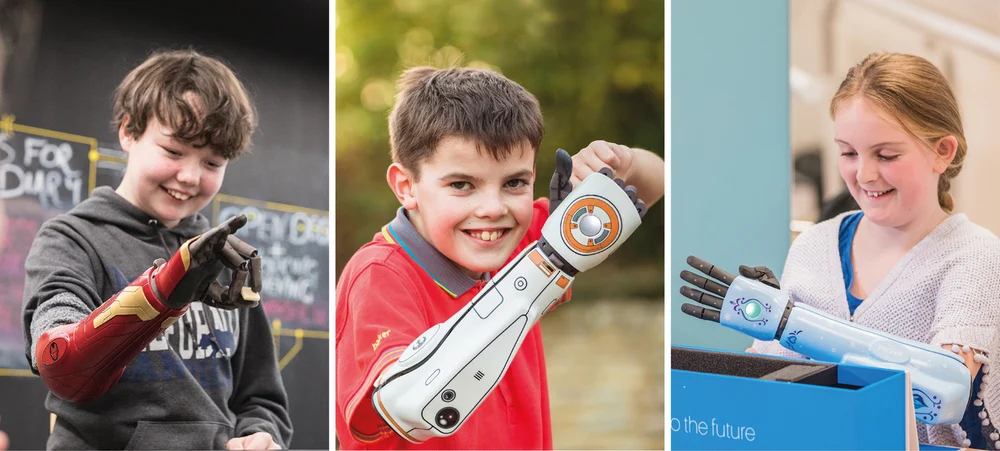
Have you ever dreamed of being a superhero? Of course you have, who hasn’t?!
One company, in particular, is making this dream a reality for limb different children and young adults in the UK. Bristol-based Open Bionics’ mission statement is to “turn disabilities into superpowers,” and with the Hero-Arm, they’re doing just that.
The 3D printed arms take their inspiration from on-screen heroes such as Iron Man and Adam Jensen from the Deus Ex video games. They’re made to suit each wearer and are customizable, with swappable covers. They also include sensors that pick up on electrical signals from the muscles of the user, with configurable grip settings.
Joel Gibbard co-founded Open Bionics with Samantha Payne. He was another teenage tinkerer who realized that he could use his skills to improve the lives of others. He and Samantha were named the Europa 2018 Hottest Startup Founders in Europe and have won numerous other awards. They’ve even partnered with Disney, with the right to use Star Wars, Marvel, and Frozen themes on arm covers.
Throughout 2018, Open Bionics have empowered many wearers to become TV and viral video sensations. The company calls the wearers of their 3D printed arms bionic heroes, and they are certainly that.
Limbitless Solutions – Video Games Made Real
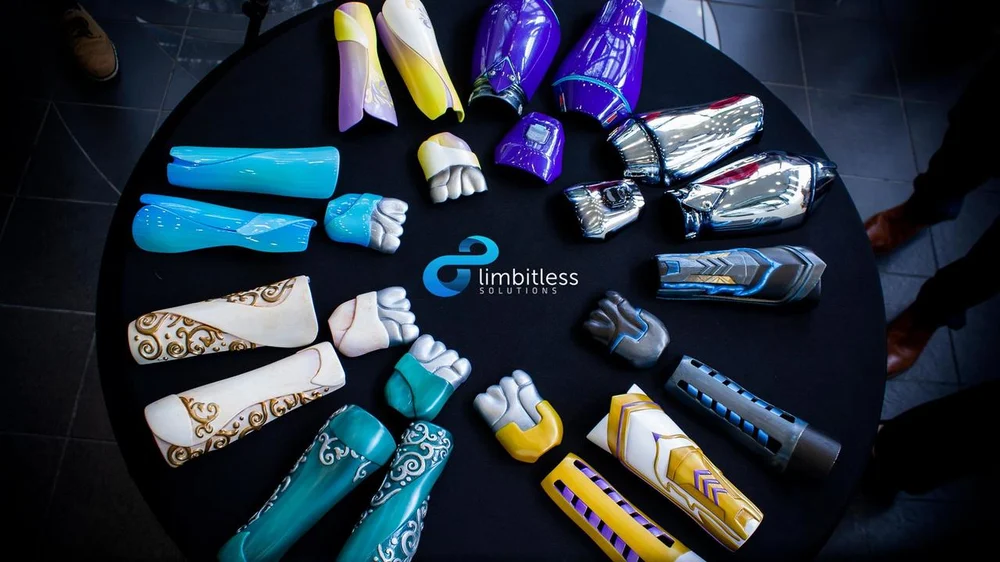
Another company aiming to make upper limb different children feel like heroes is Limbitless Solutions. This Orlando-based non-profit was founded by Albert Manero. The goal was, and still is, to give these children their confidence back.
The 3D printed arms are inspired by video games. Children can choose their class: warrior, shadow, serenity, or ethereal. Alternatively, they can choose to have Masterchief’s arm (from the Halo video games) or a prosthetic inspired by League of Legends.
The company collaborates with 343 Industries and Riot Games to bring these designs to life. The arms don’t just look the part, either; printed via FDM, they are both strong and functional. They’re controlled through the use of myoelectric sensors, which pick up voltages across the muscles of the upper arm.
Limbitless have even designed video games alongside the 3D printed arms. The same electrodes that are used to control the prosthetic are used to control the games. This helps the children learn to properly control their muscles and, by extension, their prostheses.
As seen above, traditional prostheses are incredibly expensive, and children quickly grow out of them. Limbitless Solutions has therefore pledged that “no family should have to pay for their child to receive an arm”. They’ve already given out 20 free 3D printed arms to families across the United States.
The Million Waves Project – Waste Put to Work
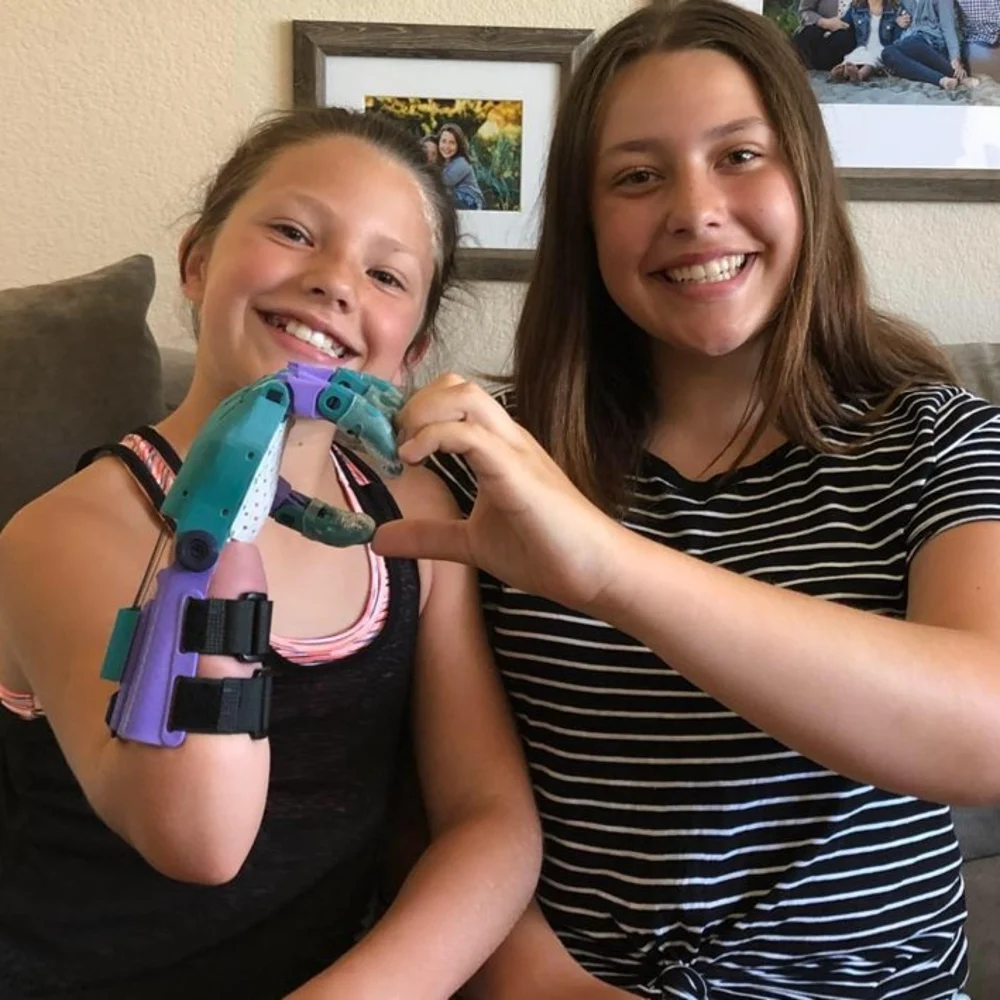
One of the biggest problems currently facing the planet is the large amount of waste plastic in our oceans. According to the Million Waves Project, 28 billion pounds of the stuff ends up in our oceans every year.
This is a problem that kept Chris Moriarty, co-founder of the project, up at night. On one of these sleepless nights, he was also contemplating the issues faced by those with a limb difference. The two problems came together in his head: Why not make 3D printed arms from recycled ocean plastic?
Now, with his wife Laura and a team of experts, they are pursuing this lofty goal. They’re busy fundraising and raising awareness for the two problems. They organize beach clean-ups and 3D print arms on their trusty Ultimaker printers.
The designs they’re using come from e-Nable, who they recently partnered with. The open source designs use fishing wire and orthodontic elastic bands as the muscles and tendons. They can be wrist- or elbow-powered, with a bending motion closing and opening the fingers.
These 3D printed arms are community developed and available to everyone. The Million Waves Project is using them to try to save the planet while lending a hand to those in need.
e-Nable – Lending a Hand
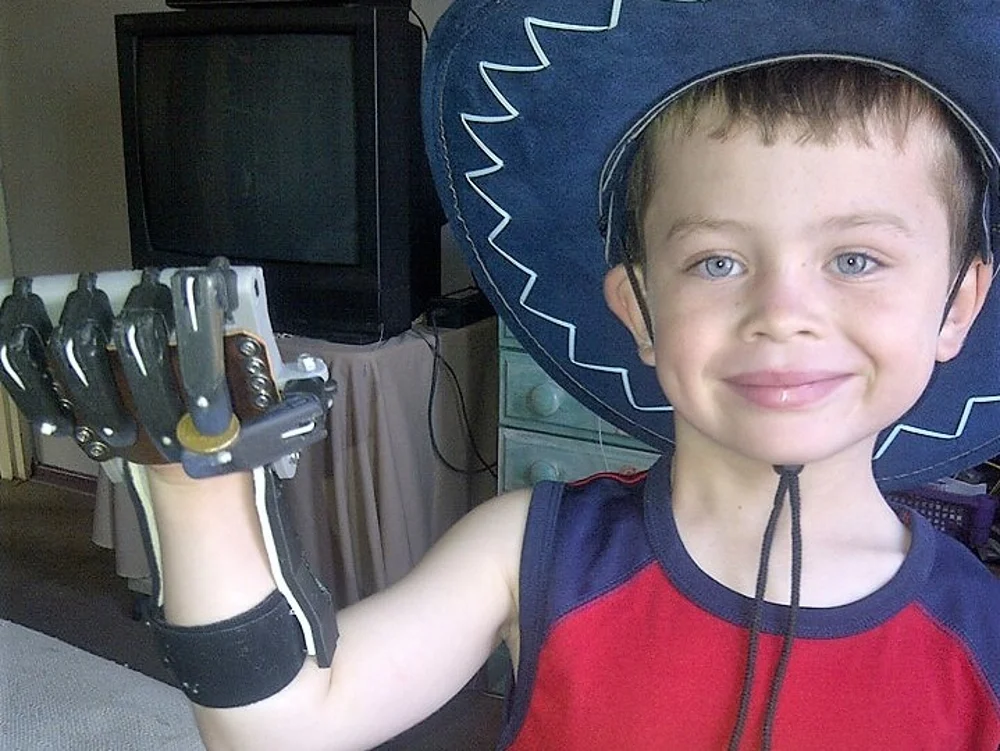
Providing the inspiration and designs for the Million Waves Project is e-Nable, the incredible community-driven project. E-Nable was set up by Jen and Ivan Owen, after Ivan created a “crazy metal, functional” hand for a steampunk convention.
They posted a video of the hand to YouTube and were subsequently contacted by a South African farmer called Richard who had lost his fingers in an accident. They then embarked on a globe-spanning collaboration project to create functional fingers for Richard from easily-sourced materials.
That project led them to Liam, a young South African boy born without fingers on his right hand. Ivan set about drawing and designing a functional arm for Liam to use. Instead of patenting the arm, Ivan gave the 3D design files that he used to print it away for free on Thingiverse.
“The journey of a thousand miles begins with one step,” and so it was that the e-Nable project was born. The community has since picked up the designs and improved them significantly, allowing anyone with a 3D printer to download and produce them with only a few extra components. The 3D printed arms designed for the e-Nable project have been used by people in over 40 countries, improving thousands of lives across the world.
Source: https://all3dp.com/2/3d-printed-arms-most-promising-projects/